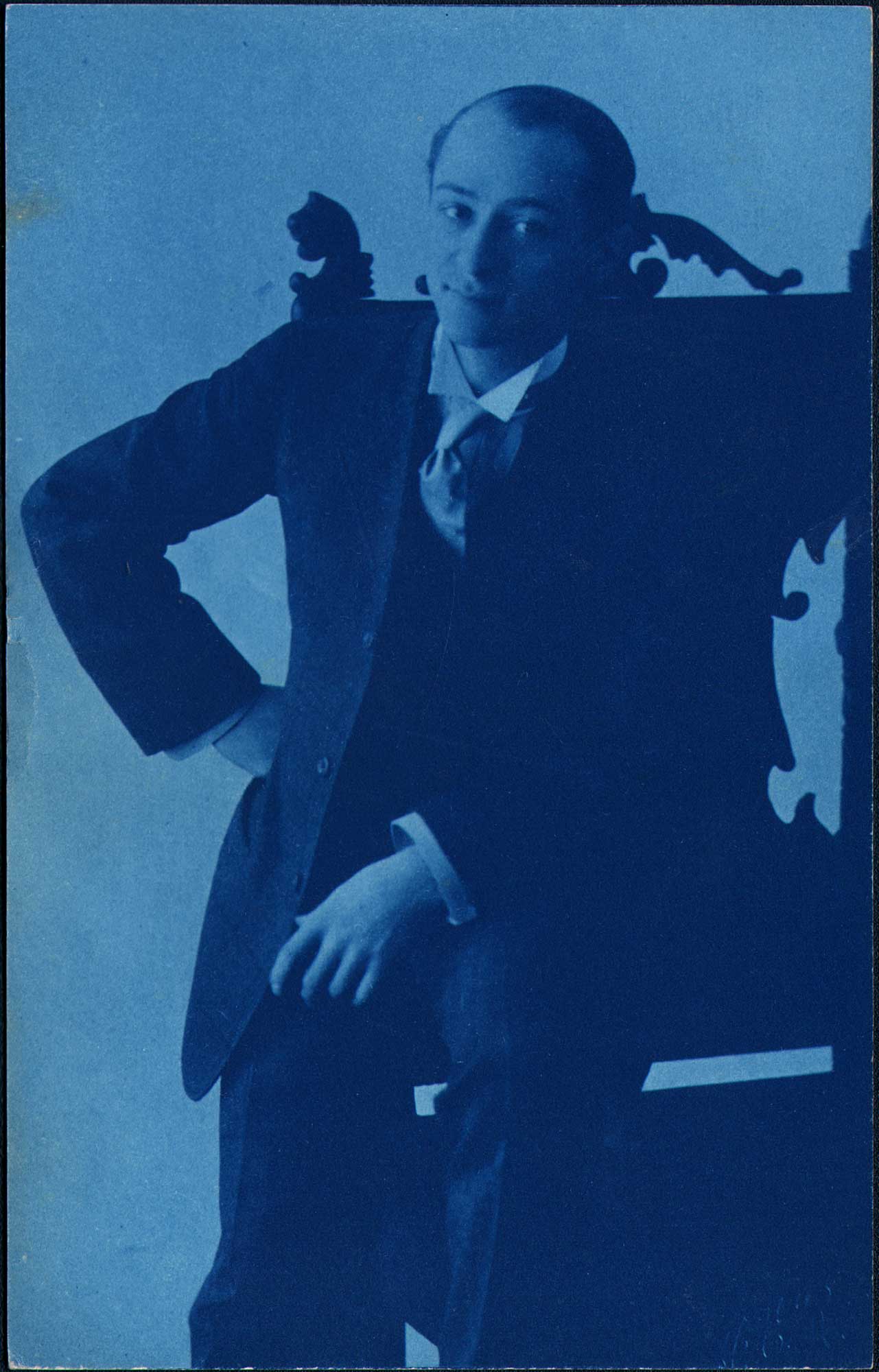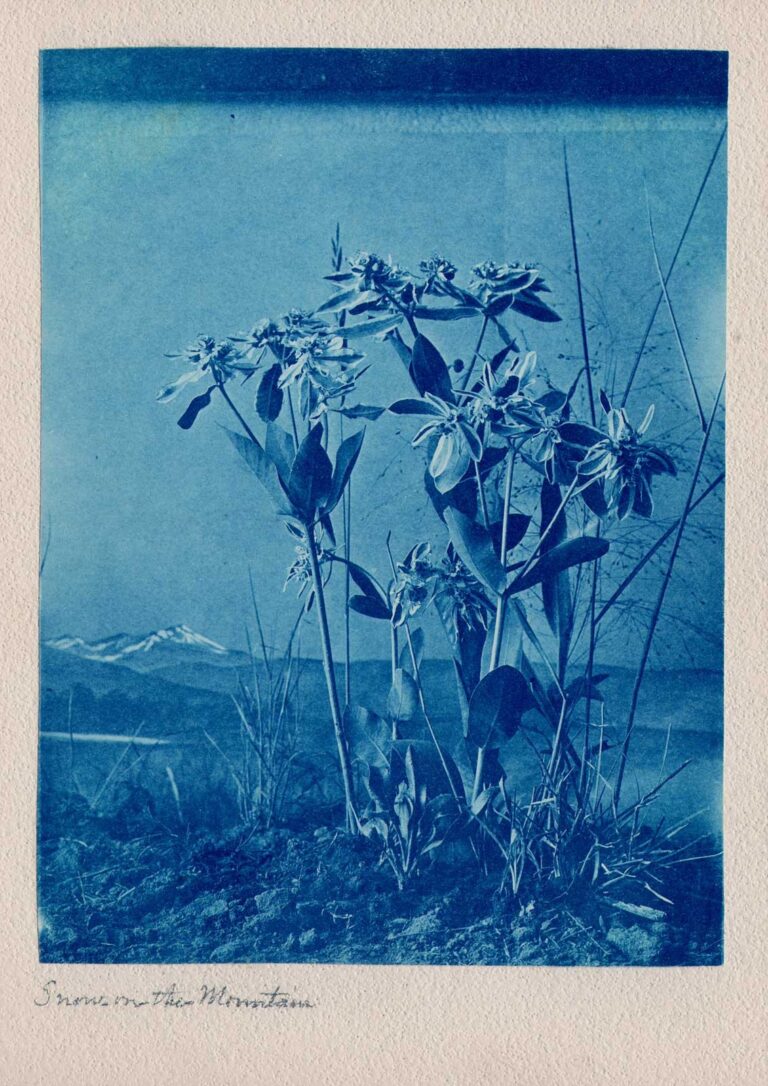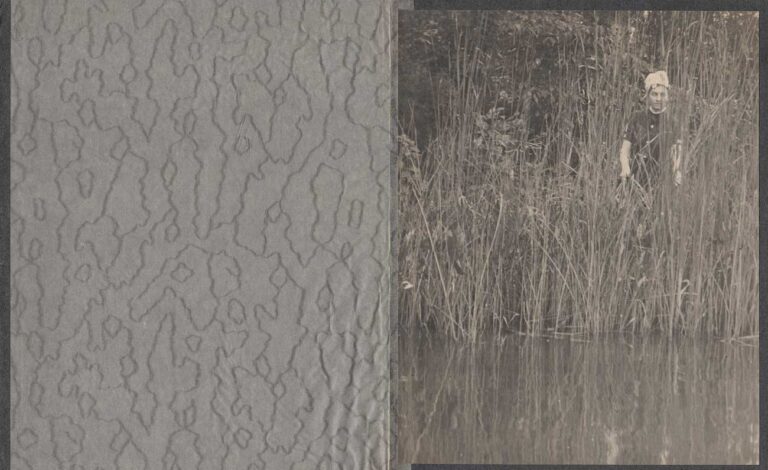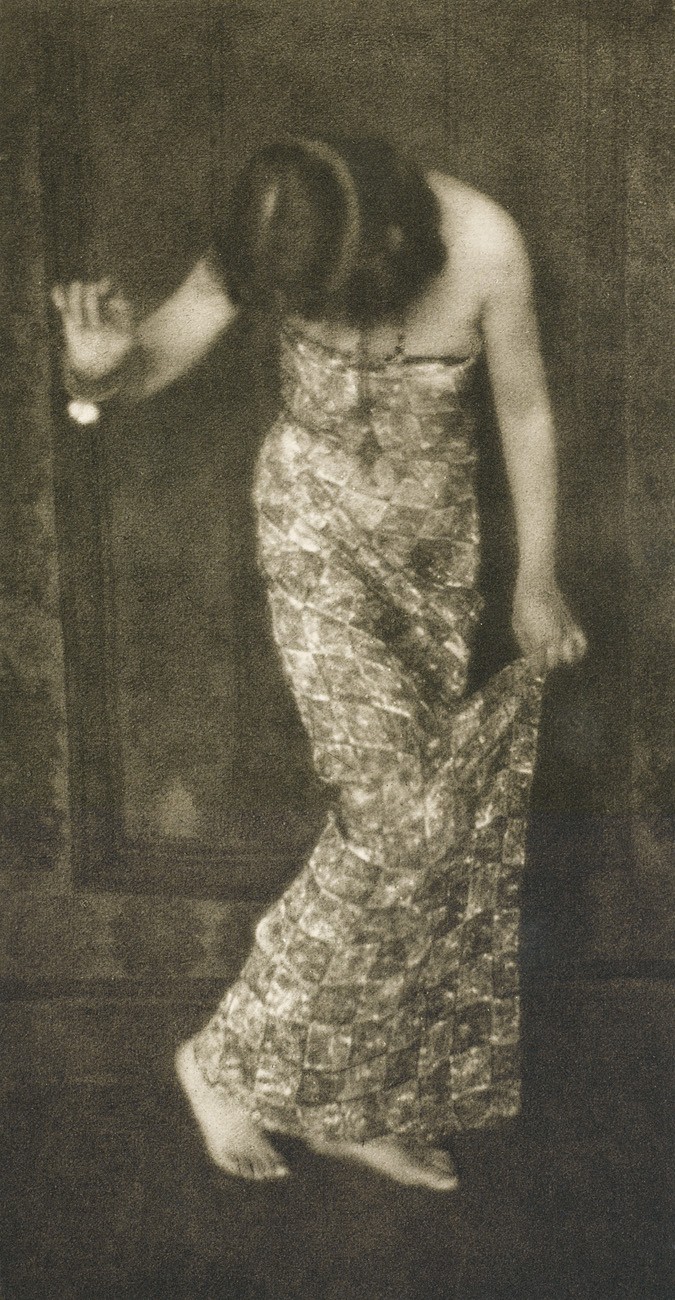
“Huntress” | Harry Hemphill | Drapery Dancer wearing Suit
This photograph shows Harry Hemphill as he looked before getting dressed up for a performance.
Harry Hemphill: 1876-1954
A six part overview of the female impersonator and “drapery dancer” Harry Hemphill (1876-1954) appeared in early 2016 by Chariton, Iowa historian Frank D. Myers, (1946-2023) president of the Lucas County Historical Society at the time of his passing. Back then, only one portrait of Hemphill from 1907 (1.) was known to exist showing him in costume from his early Vaudeville years. Links to the series appear at the bottom of this page.
Chariton, Iowa native Harry Hemphill, the son of a blacksmith and a dress-maker, made it through eight years of public schooling before going to work at age 13 or 14 as a printer’s devil, then apprentice, at The Chariton Patriot newspaper.
The seven photographs of Hemphill acquired for this archive are cyanotype postcards with surviving postmarks from 1908, the same year the following description of Harry appeared in The Patriot on June 25:
Mr. Hemphill is known on the stage as “Huntress.” His specialty is female impersonations and fancy stage dancing. In this line of work he ranks among the best in the country, appearing throughout the United States in all of the better grades of vaudeville theatres. He wears beautiful and costly costumes and draperies, all of which are his own handiwork. His stage settings, curtains and the like are magnificent. He gives imitations of leading actresses and dancers, does the serpentine and other fancy dances, one of which he does on a large revolving ball. In each of the different numbers on the program he wears a different gown. Calcium lights, with beautiful colored slides, are used in some of the dances to add to the effect of the yards of flowing draperies which he wears. One of Mr. Hemphill’s pleasing impersonations will be an imitation of the famous French actress, Anna Held, in which he will sing her song, “The Gay Parisenee.”
The following year, Henry Gittinger wrote the following in The Chariton Leader newspaper:
Imagine if you can a man — a bald-headed one at that — transforming himself in full view of the audience from a genuine representative of the male sex into a French soubrette or a typical Gibson girl. That is what will happen 5 days next week, commencing Tuesday, Dec. 21st, at the Temple Theatre when Huntress, the celebrated impersonator and male drapery dancer, will appear on the local vaudeville stage for the first time in this city. It will be especially interesting to the feminine part of the public to see how this man looks when transformed as if by magic into a true representative of their sex and it must be said if the advance reports that have preceded him are to be relied upon that so clever is the deception that few if any women, if they did not see the process of transformation, would know the difference. In his manner, walk and voice, Huntress gives all the attributes of one of the gentler sex and the effect is startling in the extreme. In connection with these impersonations, which include that of Anna Held and Edna May, Huntress presents his drapery and fire dances and the color and lighting effects are marvelous creations of the electrical and scenic art. The act carries a wealth of gorgeous scenery. The price for the five days will be 10 and 15 cents.
Like many drag artists today, Huntress impersonated famous singers, dancers, and actresses of the times. His dances were inspired by, and skills compared to the likes of Gertrude Hoffman, Ruth St. Denis, Adeline Genée and Loie Fuller. Fuller, a pioneer of modern dance and use of theatrical lighting techniques, is credited as the originator of the “serpentine dance,” imitated by many vaudevillians over the years. The dance involved manipulating yards of silk fabrics, creating “serpentine” waves, illuminated by new-fangled electric lighting creating trippy optical illusions. ⎯ BELLINGHISTORY WITH THE GOOD TIME GIRLS (Originally written and Published in the Betty Pages May 2023)
1. J. Willis Sayre Collection of Theatrical Photographs, University of Washington Libraries. This 1907 dated photograph shows Harry Hemphill in one of his stage costumes. The photo is credited to the Maxwell Studio of Mount Ayr, Iowa, owned by Matthew G. Maxwell, 1855-1939.



